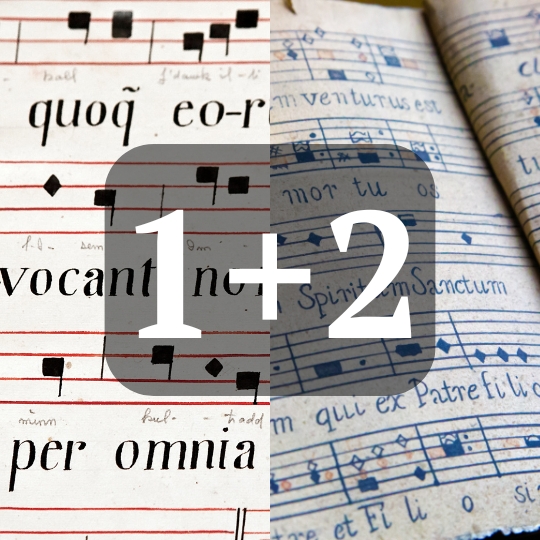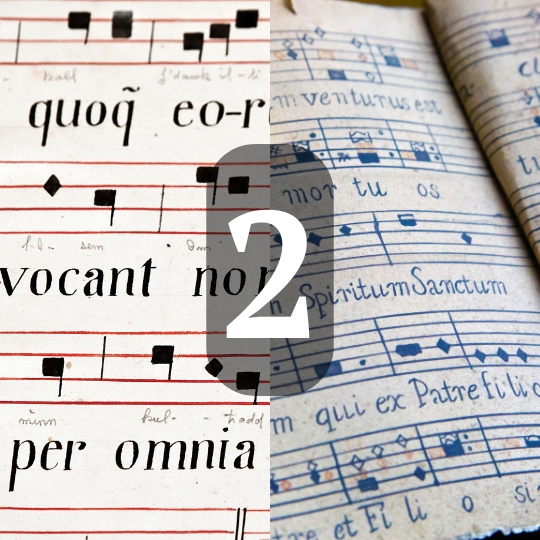Fourth Species Counterpoint is a type of music composition that focuses on creating counterpoint through suspension and syncopation, which means that notes are ideally held over from one beat to the next, creating a feeling of tension and release. Fourth species counterpoint is arguably the most complex species compared to the previous types of counterpoint because it requires careful planning to ensure that the notes harmonise well while also following strict rules.

Recapping the Previous Species
In First Species Counterpoint, each note of the counterpoint is written against one note of the cantus firmus, focusing on achieving consonant intervals on every beat. Second Species Counterpoint introduces two notes against one in the cantus firmus, allowing for the use of passing and neighbour tones to add melodic interest. Third Species Counterpoint increases rhythmic activity by placing four notes against one in the cantus firmus, creating a more dynamic interplay between the voices.
Key Definitions
Below are some key definitions, some of which recap what we have covered in previous articles:
- Cantus Firmus (C.F.): The fixed, slower melody against which the counterpoint is written.
- Suspension: A dissonant note that is tied from the previous bar and resolves by step to a consonant note.
- Preparation: The consonant note before the suspension, in this species this should be combined with the resolution:
- Resolution: The consonant note that follows and resolves the suspension.
- Thesis: The downbeat or accented beat where the suspension occurs.
- Arsis: The upbeat or unaccented beat where the resolution happens.
My course on counterpoint:
Key Features of Fourth Species Counterpoint
1. Syncopation
The most important feature of Fourth Species Counterpoint is syncopation. In this style, every note of the main melody, called the cantus firmus (or canto fermo), is paired with a note in the counterpoint that starts on an offbeat and is tied over to the next beat. This creates a rhythmic effect where the tension builds up on the offbeat and resolves on the downbeat, giving the music a flowing, suspended quality.
2. Starting the Melody
The counterpoint always begins with a rest, followed by a note that is tied to another note in the next measure. This first note must harmonise perfectly with the cantus firmus, meaning it should be either the same note, an octave above or below, or a fifth above or below.
3. Harmonising Notes
Throughout the piece, the note that starts on the offbeat (called the arsis) must always harmonise with the cantus firmus. The note it is tied to (on the downbeat, called the thesis) can either harmonise or create a dissonance (a note that doesn’t sound as smooth). If it’s a dissonance, it needs to be resolved by moving to a note that does harmonise, usually by stepping down to the next note in the scale.
Rules for Using Dissonances
Dissonances, or notes that clash slightly with the main melody, are allowed but must be handled carefully. Different types of dissonances can be used depending on whether the cantus firmus is in the higher or lower voice (part):
- When the cantusfirmus is in the lower voice, you can use the following dissonances and resolutions:
- 7th to 6th;
- 4th or Tritone to 3rd;
- 9th to 8ve;
- When the cantusfirmus is in the higher voice, you may use the following dissonance:
- 4th (or Tritone) to 5th;
- 2nd to 3rd;
- 9th to 10th;
These dissonances add richness and complexity to the music, but they must always resolve correctly to avoid sounding jarring or unpleasant.
Converting Fourth Species to First Species
One way to check if your Fourth Species Counterpoint is correct is to simplify it by removing the tied notes. This process reduces the counterpoint to First Species, where there is only one note per measure. If the music still sounds good and follows the rules of First Species Counterpoint, then your Fourth Species Counterpoint is likely well-written.
Les Biches (RM25-6) – Francis Poulenc
Starting to Compose With Counterpoint: Guide to Writing Combined 1st and 2nd Species Counterpoints
How to Write Third Species Counterpoint: A Comprehensive Guide
How to Write Second Species Counterpoint: A Comprehensive Guide
How to Write First Species Counterpoint: A Comprehensive Guide
Making Mozart Scary
Forbidden Successions
Certain successions of intervals are forbidden in Fourth Species Counterpoint:
- Successions of Ninths Resolving to Octaves: When the canto fermo is in the lowest part, a succession of ninths resolving to octaves is prohibited because it creates a series of parallel octaves. Parallel octaves weaken the harmonic structure and are generally considered poor writing in counterpoint.
- Successions of Seconds Resolving to Unisons: Similarly, successions of seconds resolving to unisons are forbidden, as they also lead to undesirable parallels.
- Successions of Fourths Resolving to Fifths: When the canto fermo is in the upper part, successions of fourths resolving to fifths are prohibited because they create a chain of parallel fifths, which are less problematic than octaves but still weaken the counterpoint.
These rules help to maintain the harmonic integrity of the counterpoint by preventing undesirable parallel intervals, which can make the music sound mechanical and less interesting.
Weirdly Acceptable Fifths
Interestingly, while successions of fifths are generally forbidden in Second Species Counterpoint, they are allowed in Fourth Species Counterpoint under specific conditions. If the succession of fifths occurs on the first minim in the bar and passes the reduction test, it is permitted. This exception arises because in Fourth Species Counterpoint, the first minim is removed during the reduction process, which avoids the issue of parallel fifths in the simplified version.
Exceptions and Special Cases
Sometimes, it’s difficult to maintain the strict rules of Fourth Species Counterpoint without the music sounding forced or unnatural. In such cases, composers are allowed to interrupt the syncopation briefly by using a different type of counterpoint (Second Species) for just a moment. However, this should only be done when absolutely necessary. (See example below in “Finishing the Counterpoint: Ex. 2”
Introduction and Allegro for Strings (Edward Elgar) – String Orchestration
How to Write Second Species Counterpoint: A Comprehensive Guide
Bizet’s Farandole (L’Arlesienne No.2): music composition techniques
Bernard Herrmann “The Merry-go-round” from “Walking Distance” (Bitesize Music Composition Analysis)
This is Berk – How To Train Your Dragon (Dreamworks) – John Powell (Music Analysis – Composition Technique)
Mozart’s E-Minor Violin Sonata, K. 304: music composition techniques
Finishing the Counterpoint
The final note of the counterpoint must match the length of the final note in the canto fermo (Rule LVI). The way the counterpoint resolves at the end is crucial for a satisfying conclusion:
- When the cantus firmus is in the Lower Part: The counterpoint should end on an octave, preceded by a major sixth and a suspended seventh. This creates a strong and stable final cadence.
- When the cantus firmus is in the Upper Part: The counterpoint should end on a unison or octave, preceded by a minor third (or tenth) and a suspended second (or 9th). This provides a different type of resolution but still ensures a harmonious conclusion.
Conclusion
Fourth Species Counterpoint is a challenging but rewarding style of music composition that requires a good understanding of harmony and rhythm. By carefully following the rules of syncopation and dissonance, and by avoiding common mistakes, you can create music that is both intricate and beautiful. While the rules are strict, there is some flexibility to ensure that the music remains expressive and natural. Mastering this style will greatly improve your overall composition skills and deepen your understanding of how music works.
My Course on Counterpoint:











